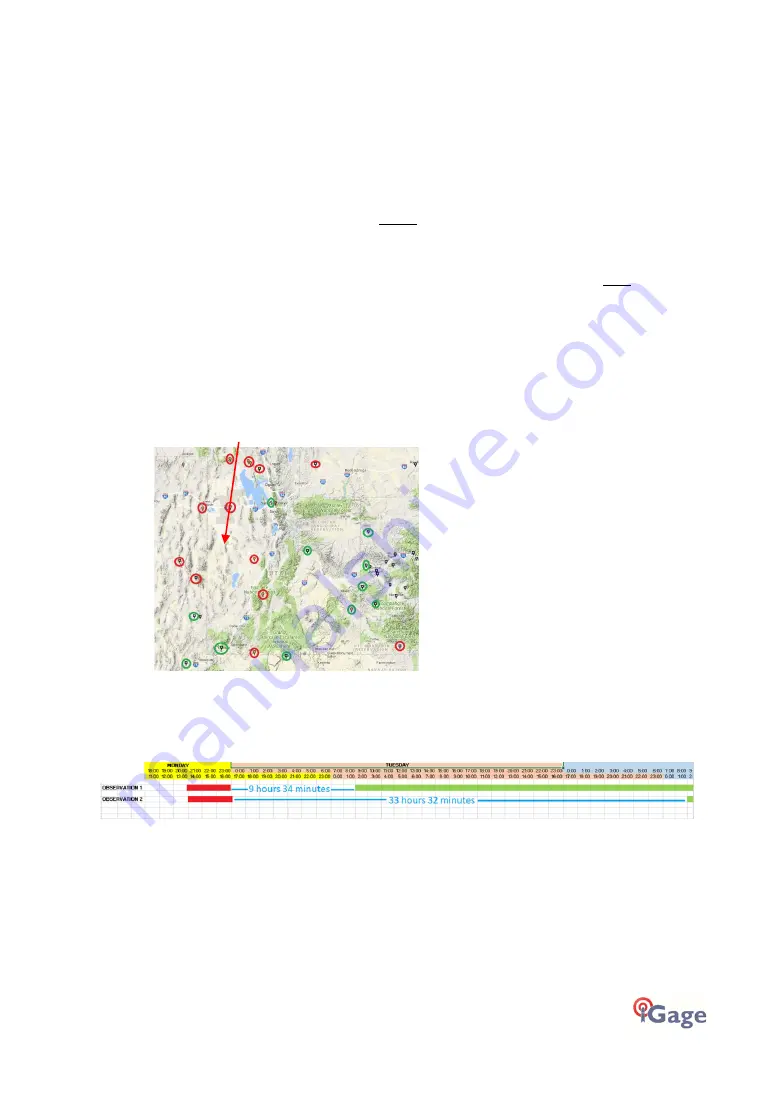
iGage iG9 User Manual
61
Hourly means that the previous hour’s data is collected and available immediately after the top of
each hour. Collection is EVERY HOUR.
Hourly data is much more desirable.
For the two sites above:
P113 data is typically available at 09:03 am (UTC) on the following day.
PUC2 data is typically available 35 minutes after the top of each hour.
If your OPUS submission has sufficient nearby hourly stations, then you can probably wait 45
minutes after the top of the hour following your file collection and an OPUS submission will be
successful.
However, if you are collecting data in an area where most of the stations have only daily availability
you will have to wait a longer time before the nearby stations will be available for use.
This is especially troublesome if you acquire observation data in two separate UTC days. (In other
words, your observation spans midnight UTC.)
#5 Some areas of the United States effectively ONLY have Daily
Data
Consider Western Utah:
Daily Stations Red
;
Hourly Stations Green
If your observation is in the western part of the state, there are only daily stations available.
Let’s look at an example with two observati
ons collected on the Northwest side of Utah near
Wendover Nevada:
The two observations were performed Monday afternoon (the red bars.) One is a section corner,
the other is vertical bench mark which is only 400 feet northeast of the section corner. Both
locations enjoy completely open sky
–
no canopy. Both observations are exactly three hours in
length.
The first observation starts at 1:59 pm Mountain Time (20:59 UTC) and ends at 4:59 pm Mountain
Time (23:59 UTC.)
The second observation starts two minutes after the first at 2:01 pm Mountain Time (21:01 UTC)
and ends two minutes after the first observation ends at 5:01 pm Mountain Time.






























